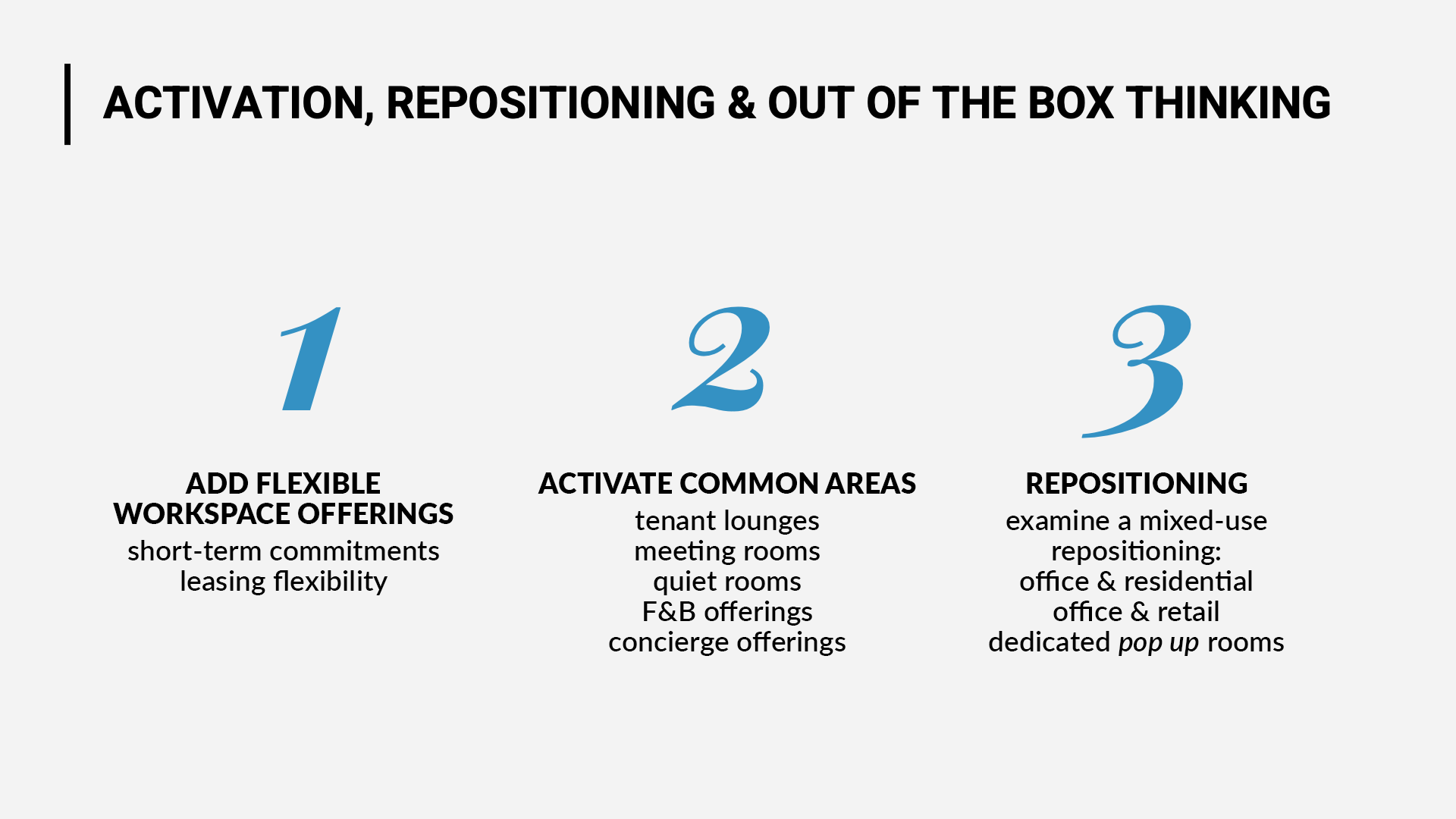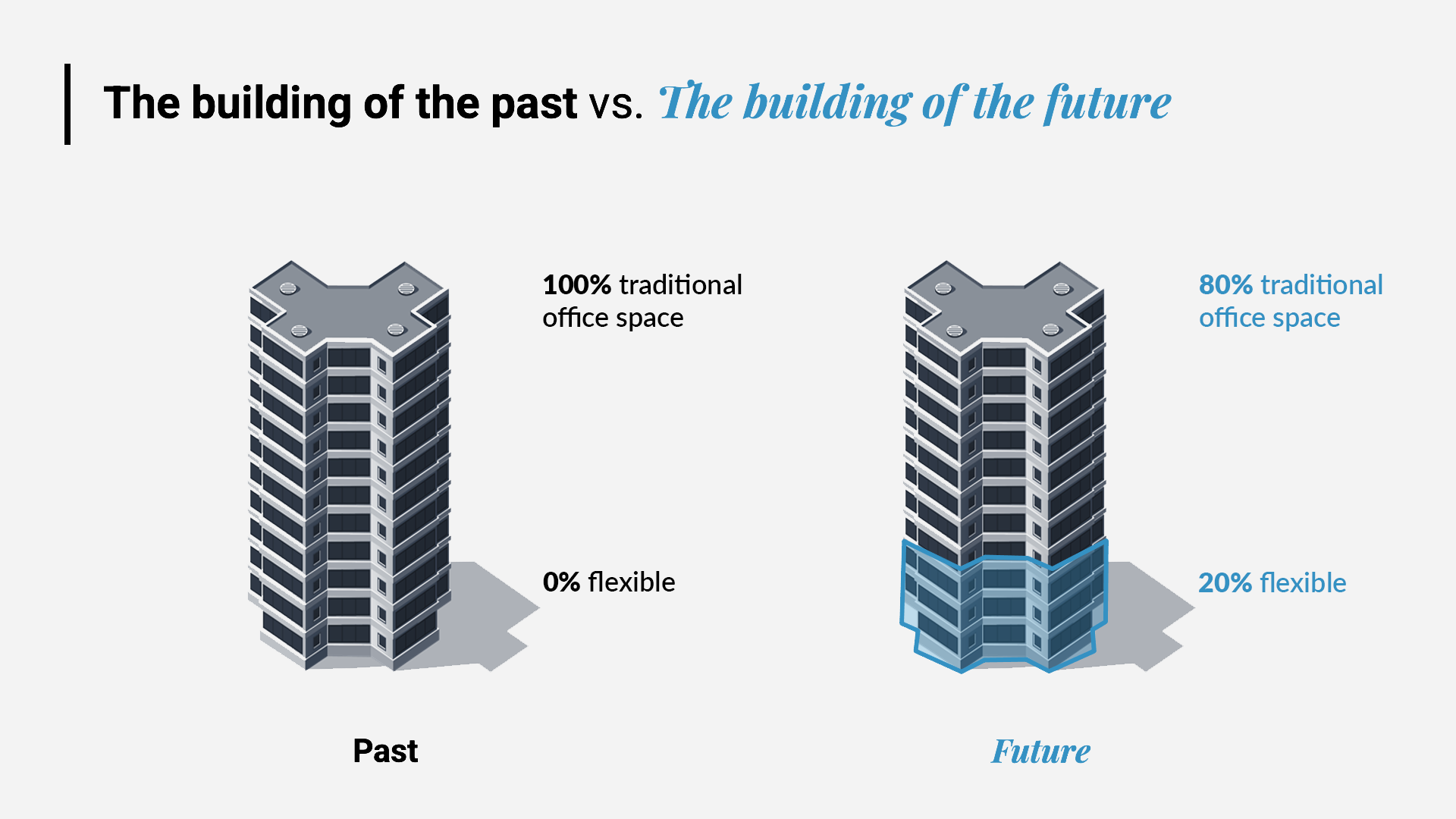The Building of the Future
Published by Wilco Wijnbergen on Aug 30, 2021

The first office lease transactions to be recorded were signed in the middle of the 18th century, in London. Since then, the office market has barely changed. Until 2010.
Experiencing shifts for the first time in almost 300 years, the office market has undergone tremendous changes since 2010, reaching a pivotal moment in its transformation in 2021.
Characterized by the rapid rise of the flexible workspace industry after the 2008 Lehman Brothers Crisis, the decade has observed a shift in the dynamics between participating stakeholders (Landlords, Financiers & Tenants), with tenants becoming the main focus group after having been previously overlooked.
Led initially by WeWork and competing with conventional landlords, flex workspace operators such as The Office Group, IWG, Industrious, and others started bringing new offerings based on two core fundamentals: flexible size and flexible commitments.
Adapting to unprecedented circumstances
Nobody could have predicted the effects of the global COVID-19 pandemic in its initial phases - with lockdowns imposed worldwide and governments looking to figure out optimal next steps, most industries have been forced to change course and find ways to adapt to a new normal. Without meaning to, ventures of all kinds started what will be remembered as the most impactful experimental movement in the modern history of work: introducing work from home as a worldwide measure.
Today, we are already able to observe the short-term results of the aforementioned changes. Due to large-scale digitization and state-of-the-art online technologies, working from home has proven to be an efficient system that ventures all around the world are willing to continue, especially when it combines partially working from the office, also known as HYBRID WORK. Companies such as Facebook, Google, Microsoft, and Amazon have already announced that they plan to make hybrid work permanent, allowing employees more flexibility.
Flexible solutions as a catalyst for change
Unsurprisingly, this revolution of the workplace has had a resounding effect on the real estate industry. More than a fleeting trend, flexible workspaces have become a vital component when it comes to facility, property, and design & build - many tenants are already fitting out their offices to make them much more suitable for hybrid work. Moreover, many enterprises, led by big tech unicorns, are shifting up to 20% of their office portfolio to managed solutions.
Upon a closer look, it comes as no surprise that so many companies are choosing to move towards flexible solutions - not only do they provide high-quality services to employees, flexibility also creates cost-effective ways to reduce or expand the workforce as needed while focusing on growing the business, and it enables communication, collaboration, and creativity.
"Flexible workspace is here to stay, nobody can dispute this. In the wake of the COVID-19 pandemic, occupiers of all kinds are looking to future-proof their business operations by choosing leasing solutions that provide upwards and downwards flexibility, as well as dynamic, best-in-class environments. Those landlords who can provide a tailored, hybrid occupational strategy, with a layer of service, will set themselves apart from the rest."
Gavin Kamara, Head of Leasing, Kontor
How can office landlords adapt to change?
For many CRE landlords, the current situation looks bleak - as more ventures are choosing flexible options, they are losing their highest paying, highest quality tenants.
So what should office Landlords do?
Embrace the future.
Add a flexible component to their building.
Activate their building.
Re-position their building.
Think out-of-the-box.
With new long-lasting changes gaining popularity in mere months and tenants looking for solutions that perfectly address their needs, it’s up to office landlords to rethink the way they utilize their properties.
Focusing on leasing flexibility and shorter-term commitments, all while activating unused areas of the building or examining a potential mix of offices and residential/retail spaces, can be a great way to meet current requirements and turn adversity into profit.

White label flexible workspace providers such as infinitSpace support landlords in finding solutions by adding flex components to their buildings and activating unused common areas. Recent findings show that converting 10-20% of traditional office space into flexible workspace can increase rent by 10%. Moreover, the flexible workspace is conceptualized and built according to the landlord’s unique requirements, while building their own brand. The results?
Increased asset value
Adding flexible components to the facility and thus activating un-utilized spaces increases rent and thus allows the landlord to profit from the maximum value of their assets.
Improved tenant experience
By implementing a customized tenant experience software throughout the building, as well as by creating space that can be used in a unique, collaborative way, both traditional and flex tenants benefit from an upgraded experience.
Future proof building
Implementing tenant experience software offers 24/7 connection with tenants and thereby an understanding of everyone’s needs. This knowledge provides valuable information to take well-thought decisions regarding short and long-term investments.

Regardless of industry or business focus, one thing is clear: flexible offers will continue to grow in popularity, as more companies explore the future of work - it is predicted that up to 30% of the office space currently occupied by the corporate sector will be made out of flexible workspaces by 2025. Thus, landlords that can keep up with the trends and start offering their own flexible workspace brands are the ones that will be able to remain relevant and thrive in the upcoming years.
Are you currently looking to transform your space into a flexible workspace? infinitSpace makes it easier than ever for landlords to find flexible solutions to current challenges. Get in touch with us for more information here.
